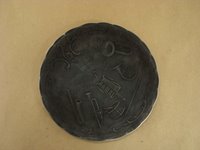Surface finishing may sound ordinary, but it’s one of the popular methods used in manufacturing. Among all the methods that shape and smooth parts, vibratory finishing stands out. It turns rough, raw pieces into quite fine, ready-to-use components with surprising ease. From cleaning burrs off heavy metal parts to polishing delicate tools, this process works like a steady rhythm. It is simple in motion, yet powerful in result.
This guide explores every part of it. We look at the process, machines, settings, and real-world uses. For those who are new to surface finishing and those trying to fine-tune a production line, a good grasp of vibratory finishing can make your results shine brighter and your workflow smoother.
The Basics of Vibratory Finishing
At its core, vibratory finishing is all about movement, contact, and energy. It began as a quite simple tumbling process, and over the years, it grew into a more controlled and predictable system. The main idea is quite simple: let parts and finishing media move together under vibration so that the end result is that surfaces become smoother, cleaner, and more refined.
Inside the machine, the parts and media have a constant rolling, rubbing motion. This contact clears burrs, softens edges, and polishes even the tiniest of peaks. What looks random is actually well-balanced mechanical energy at work. Here, motors convert rotation into vibration, usually at 1,000–3,600 vibrations per minute (VPM). The movements could range anywhere from 1 to 5 millimeters.
That constant motion keeps every surface in touch with the media. The result? Even the most complex shapes come out evenly polished. There are no sharp edges and no roughness. What you get is a clean and consistent finish.
Vibratory Finishing: How Does It Work?
The working idea behind vibratory finishing is both clever and simple. Parts and abrasive media are placed together in a tub or bowl. When the machine vibrates, the media rubs against the part surfaces repeatedly. At the same time, cutting, polishing, and cleaning happen in unison.
In the early days, these machines were basic. There were just tubs with off-balance weights. Then came the 1970s, when machines started to have variable speed controls. These controls made it possible to handle lighter and more fragile parts. By the 1990s, computers also entered the scene. The machines now had better precision and programmable finishing cycles.
Today, vibratory finishing machines are designed smarter than ever. They are powered with sensors, digital controls, and IoT features. Many systems can monitor vibration in real time. They can adjust speeds automatically and separate media once a cycle ends. This evolution makes the process faster, more reliable, and often four times quicker than early machines.
Important Vibratory Finishing Parameters
Every detail matters in vibratory finishing. The vibration settings, the media used, even the timing. They all decide how the final surface looks and feels.
- Amplitude: This defines how strong the vibration is. Higher amplitudes (3–5mm) remove more material quickly. However, they could harm delicate parts. Lower amplitudes (1–2mm) offer a smoother touch for gentle polishing.
- Frequency: It controls how fast the media moves inside the machine. Most finishing processes perform best between 1,500 and 3,000 VPM.
- Cycle time: Depending on the job, a cycle can take anywhere from half an hour to eight hours.
- Media type and volume: The ratio of parts to media usually ranges from 1:3 to 1:5 by volume. The choice of media could be ceramic, plastic, steel, or something else. It determines how aggressively the material is finished.
Each machine, each batch, and each part behaves slightly differently. That’s why testing and small adjustments are vital. Vibratory finishing is not guesswork. It’s a balance of touch, motion, and timing.
Vibratory Finishing Equipment Types and Uses
Vibratory finishing machines come in a few main designs. Each is suited for a different type of part or production style.
Tub-style finishers
These machines are rectangular and often long. They are powered by motors on the sides. They can handle large parts or many pieces at once, up to 40 cubic feet of material. Their straight walls help maintain even media movement. Tub finishers are a staple in industries like automotive, agriculture, and heavy machinery. Adjustable vibration controls make them perfect for bulk or oversized parts. They ensure strong but uniform action.
Bowl-style finishers
These are circular machines that create a smooth spiral motion of parts and media. The movement is continuous and gentle. It is ideal for smaller or complex-shaped components under 6 inches. In aerospace, electronics, and medical manufacturing, bowl-style machines are the go-to choice. They often feature polyurethane liners to reduce wear and adjustable drives for custom control.
Both machine types can be fitted with separation screens. The screens automatically sort finished parts from media, reducing manual handling and saving valuable time.
Vibratory Finishing Technology in Industry
Different industries depend on vibratory finishing, but they use it in ways that match their unique goals.
Aerospace Applications
Every component in aerospace must meet strict surface standards. Finishing here is not just about smoothness; it’s about safety and performance. Vibratory finishing can bring parts like turbine blades to extreme accuracy up to ±0.0005″. It gives finishes that are smoother than 16 Ra. The process avoids hydrogen embrittlement. It complies with demanding certifications such as AS9100 and NADCAP.
Automotive & Transportation
This field quite thrives on speed and precision. Vibratory finishing is used daily for drivetrain parts, gears, valve lifters, and connecting rods. The process removes all of the burrs and sharp edges. It maintains tolerances around ±0.001″. With automated lines, you can handle up to 10,000 parts per hour. With lower labor costs and quite high consistency, most manufacturers recover their investment within a year.
Medical & Pharmaceutical
For this industry, purity and smoothness are everything. Surgical tools and implants must be perfectly clean and free from any sort of contamination. Using FDA-approved media and solutions, vibratory finishing achieves an amazing surface smoothness below 0.2 Ra in clean-room environments. Materials like titanium, cobalt-chrome, and PEEK benefit most. The process follows ISO 13485 and 21 CFR Part 820 standards, ensuring there is complete safety and compliance.
Vibratory Finishing: Best Practices
Getting the best from vibratory finishing is about balance. Too much vibration can scratch or dent parts; too little leaves burrs behind.
Choosing the right media matters most. Hard ceramic media cuts faster but can be rough. Softer plastic or organic media gives a polished shine. Many setups also include cleaning or protective compounds to wash away dirt and prevent rust.
Keep an eye on the process. Regularly check cycle times, media wear, and machine health. Clean separation screens and drains often. These small habits help maintain steady quality and long machine life.
Why Vibratory Finishing Matters
Why does vibratory finishing matter so much? Because it quietly transforms raw, rough components into refined, functional products. It improves how coatings stick, prepares parts for painting or assembly. It adds the final touch that defines quality.
It also saves time and money. By automating what once took hours of manual polishing, manufacturers reduce defects, speed up production, and improve consistency.
Modern vibratory finishing machines blend speed with care. They treat large automotive pieces as precisely as small medical devices. Beyond smoothing surfaces, this process protects complex shapes, keeps measurements accurate, and increases fatigue resistance. They make products stronger and more reliable.
For many industries, switching to vibratory finishing is not just a technical change; it’s a transformation in how they think about quality and efficiency.
Conclusion
Vibratory finishing is more than just a surface treatment today. It’s a key part of modern manufacturing science. From its humble start as a simple tumbler to today’s smart and precise IoT-connected, fully programmable systems, the process has evolved. It has become quite faster, more consistent, and remarkably efficient.
Understanding the right parameters, machine types, and industrial applications can help you get smoother finishes. At the same time, it reduces waste and improves output quality. From large engine components to delicate implants, vibratory finishing delivers both precision and polish.
Gentle yet powerful, it represents a perfect balance of movement, material, and method.
Upgrade your surface finishing process with high-performance vibratory finishing systems from Kramer Industries. Get smoother parts, faster cycles, and lower costs, all in one step.
👉 Contact Kramer Industries Today.




